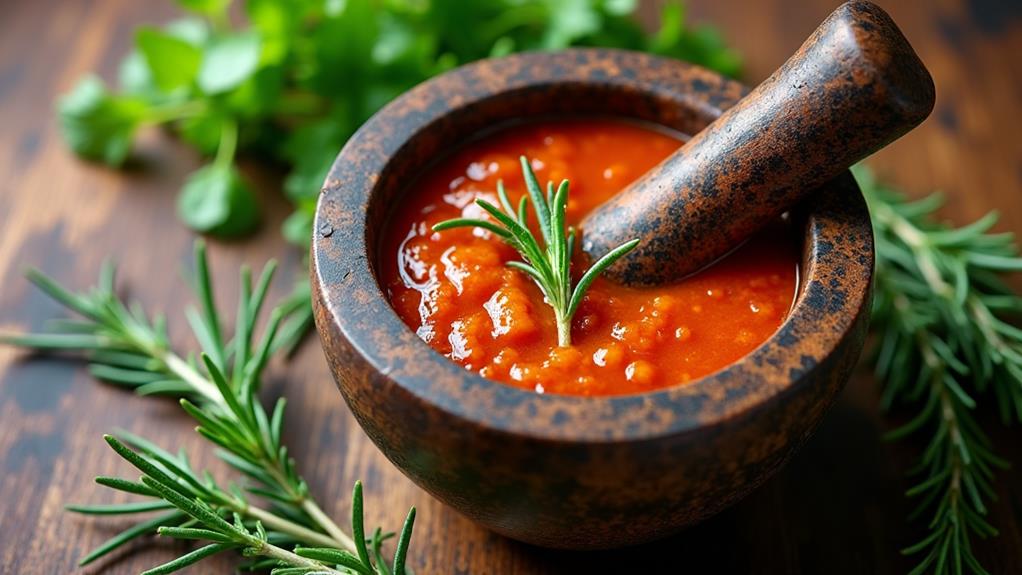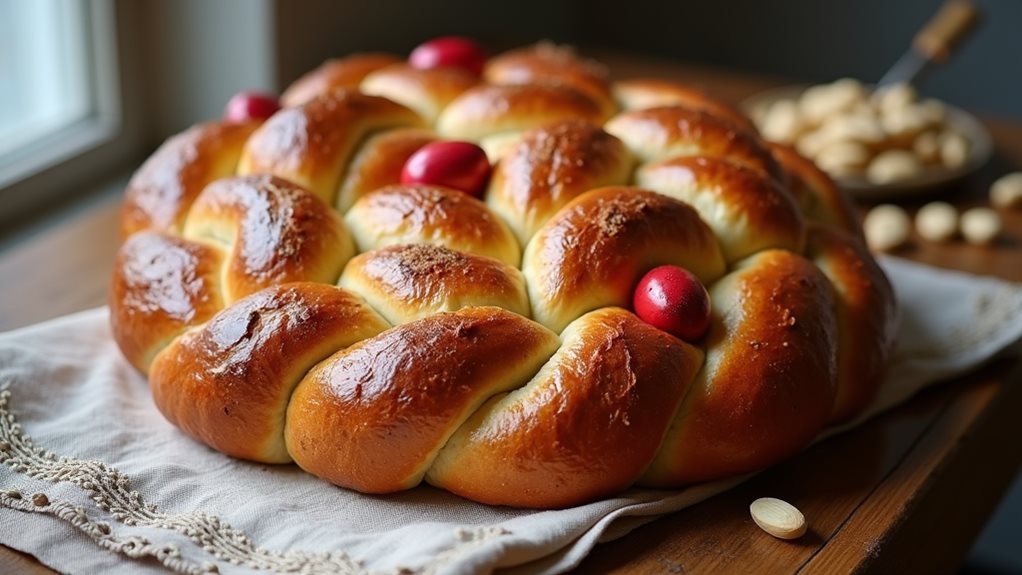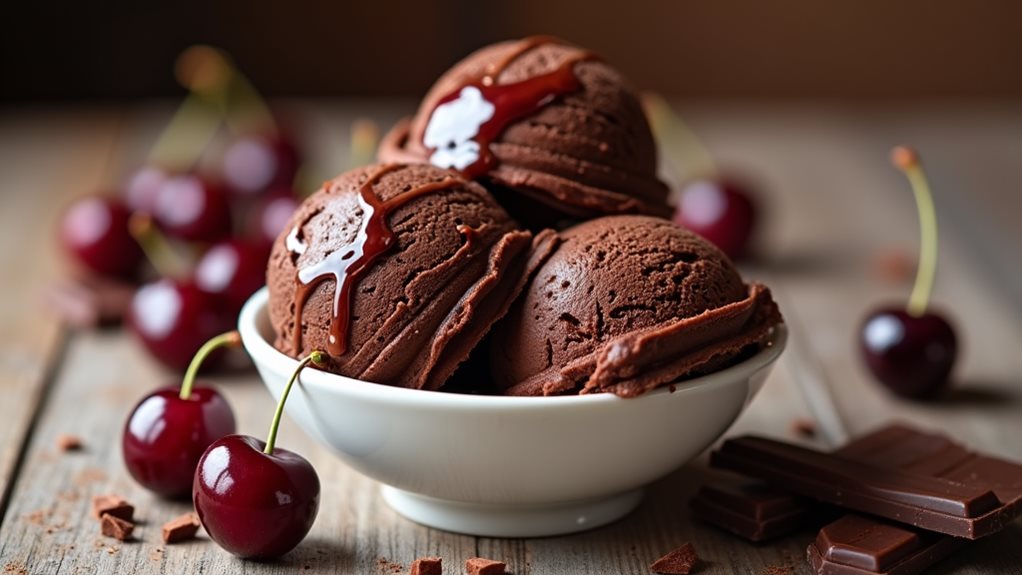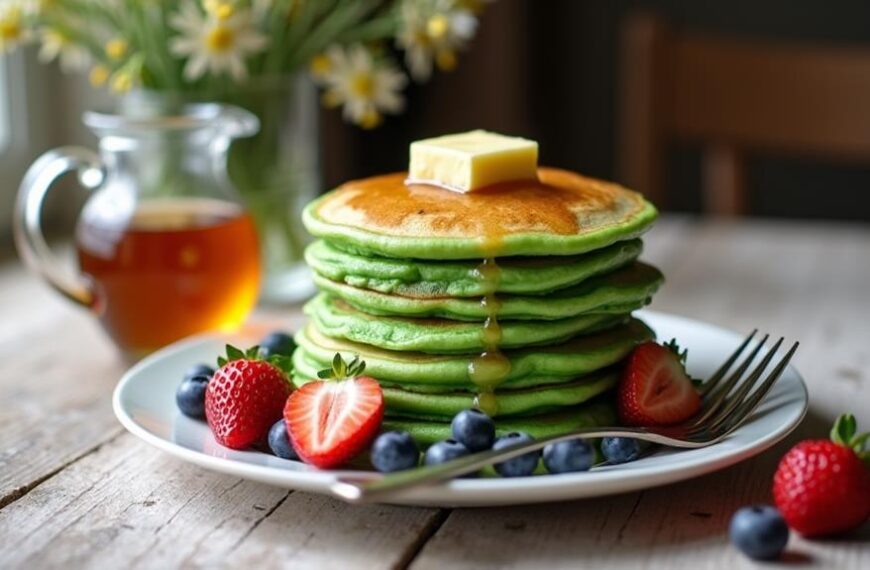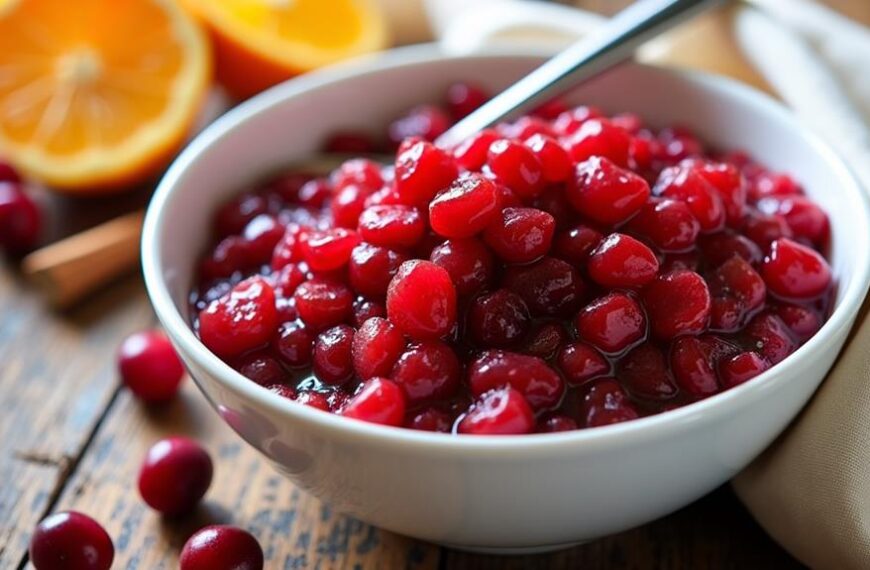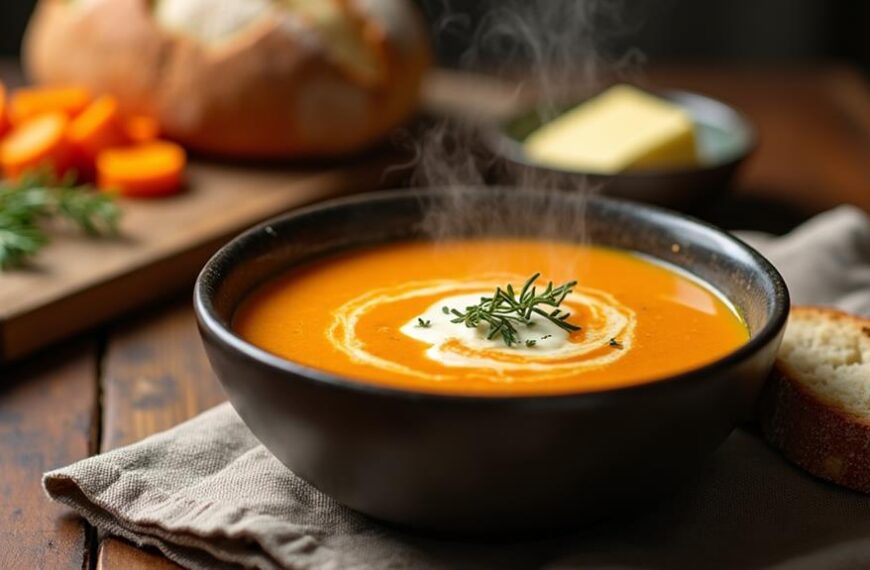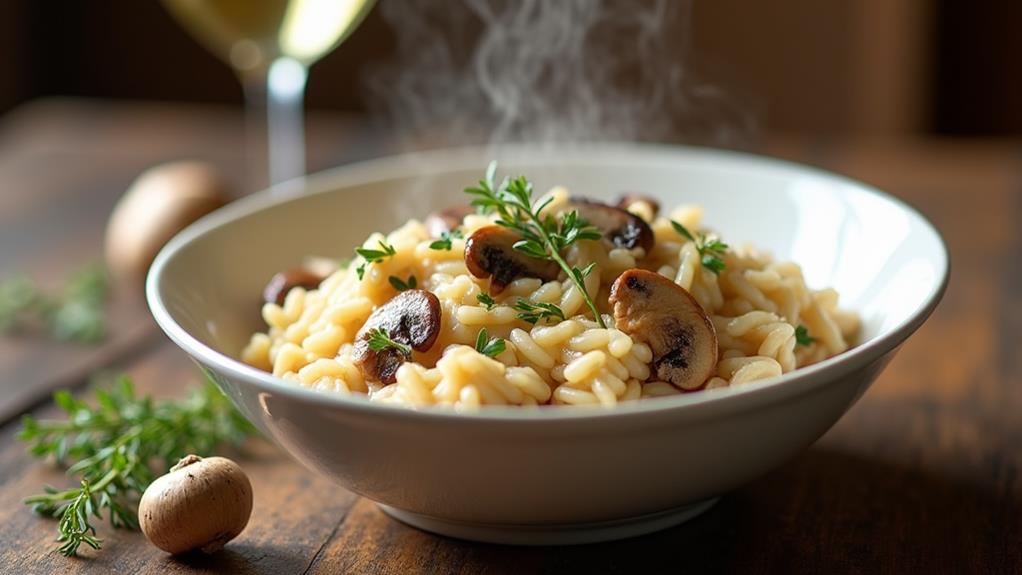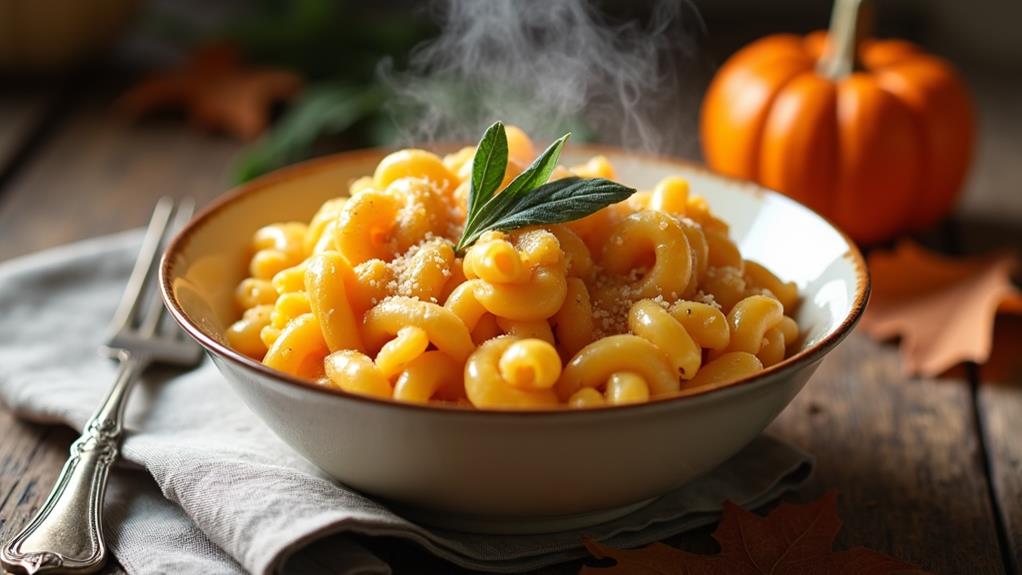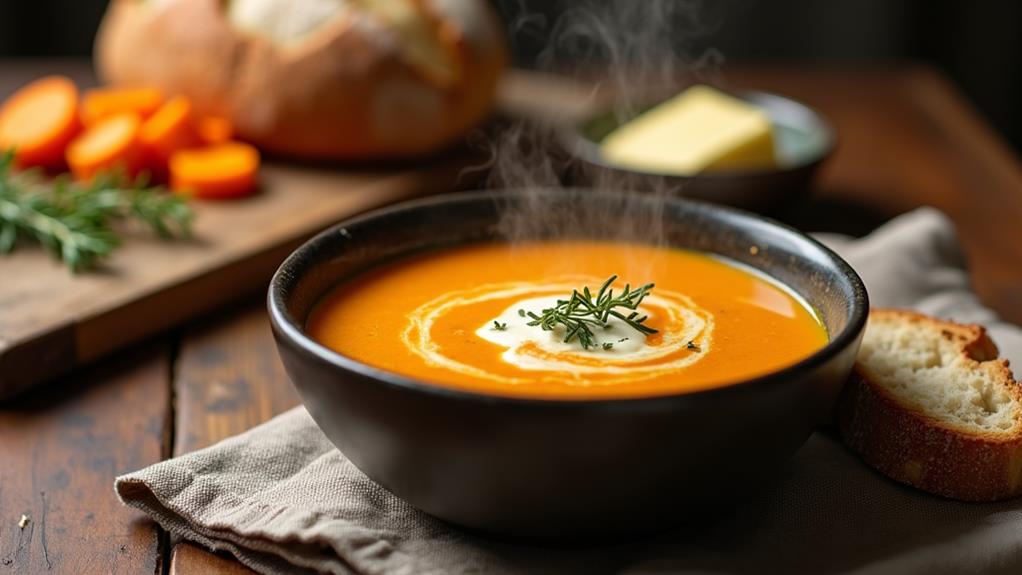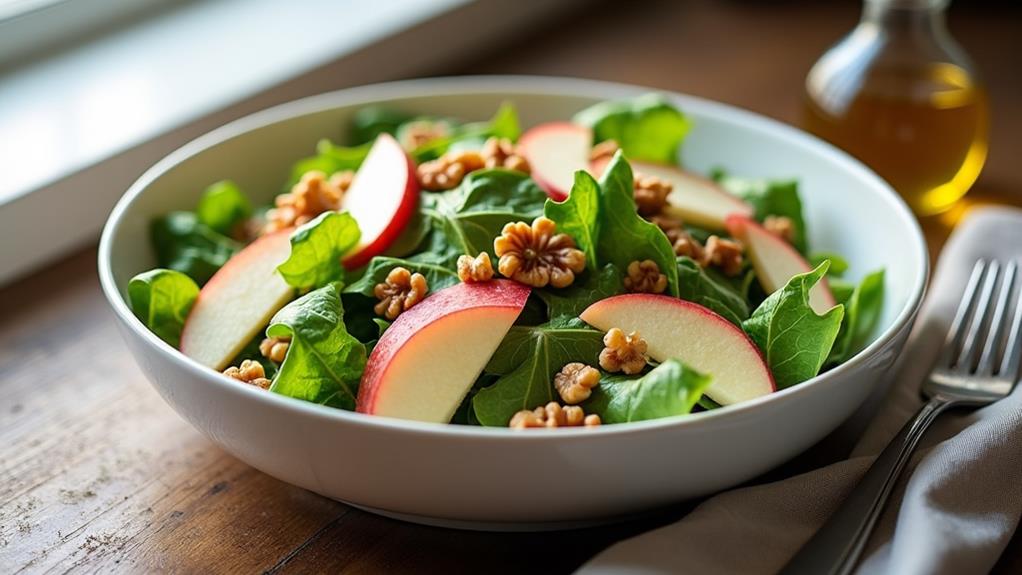Herbal infusions are your secret weapon for unleashing incredible aromas and flavors in sauces. By carefully selecting fresh, high-quality herbs that complement your sauce base, you'll elevate your culinary creations to new heights. Whether you're using classic pairings like basil in tomato sauce or experimenting with unique combinations, the key is to gently heat the herbs to release their essential oils. You can layer flavors by combining fresh and dried herbs, starting with small amounts to achieve the perfect balance. Don't forget to consider the cooking time and temperature when determining your herb-to-sauce ratio. Mastering these techniques will open up a world of aromatic possibilities for your sauces.
Enhancing Aroma Through Herbal Infusions
Enhancing Aroma Through Herbal Infusions
With a few simple steps, you can elevate your sauces' aroma using herbal infusions. The key lies in understanding aromatic synergy and mastering herb selection. Start by choosing fresh, high-quality herbs that complement your sauce's base ingredients. Consider classic pairings like basil with tomato or rosemary with cream-based sauces, but don't be afraid to experiment with unique combinations.
For instance, using herbs in dishes like Lentils With Spring Greens & Watercress Walnut Pesto not only adds flavor but also enhances nutritional value.
To infuse your sauce, gently heat it with your chosen herbs. This process allows the essential oils to release, creating a complex bouquet of aromas. Be mindful of cooking times; delicate herbs like cilantro or parsley should be added towards the end, while hardier options like thyme or sage can withstand longer cooking periods.
For an intense flavor burst, try bruising the herbs before adding them to the sauce.
Experiment with different techniques, such as steeping herbs in hot liquid or creating herb-infused oils. These methods can add depth and nuance to your sauces, transforming them from ordinary to extraordinary.
Deepening Flavor Profiles
Once you've mastered the art of enhancing aroma, it's time to focus on deepening flavor profiles in your herbal-infused sauces. By experimenting with different herbs and infusion techniques, you'll unlock a world of complex tastes that elevate your culinary creations.
Start by considering the base flavors of your sauce and choose herbs that complement or contrast them. For umami enhancement, try infusing dried mushrooms or seaweed into your sauces, which will add depth and richness.
Don't be afraid to engage in sauce experimentation. Combine unexpected herbs like lemon thyme with classic basil, or infuse rosemary with citrus zest for a bright, aromatic twist.
You can also layer flavors by using both fresh and dried herbs in the same sauce. To intensify the herbal essence, try bruising fresh herbs before adding them to your sauce, or steep dried herbs in hot oil before incorporating them.
Remember, the key to deepening flavor profiles lies in balance. Start with small amounts of herbs and gradually increase until you achieve the desired intensity.
Balancing Taste With Herbs
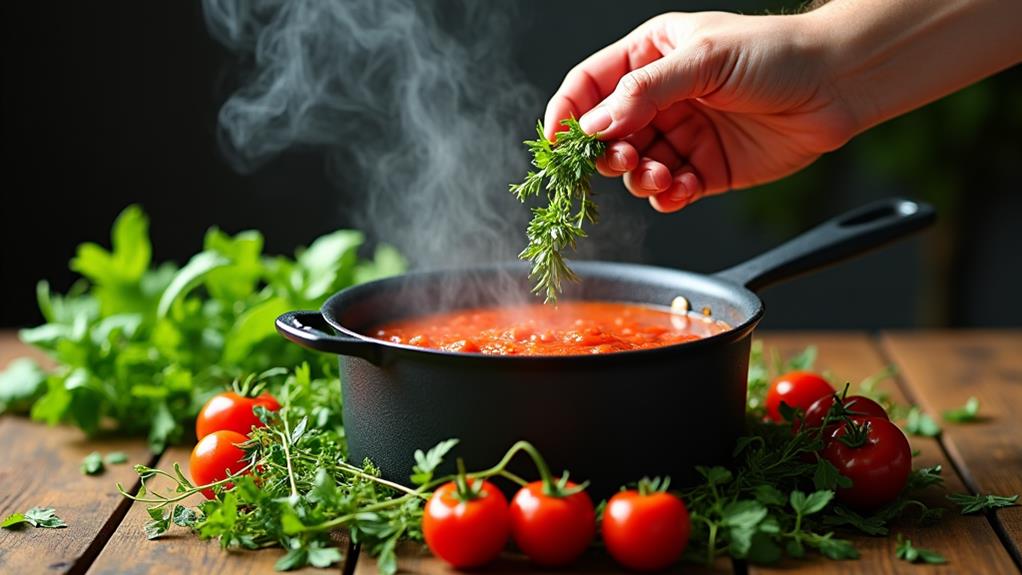
When balancing taste with herbs in your sauces, you'll want to consider complementary flavor profiles that enhance your dish's overall appeal.
You can achieve the perfect herb-to-sauce ratio by starting with small amounts and gradually increasing until you reach the desired intensity, remembering that dried herbs are more concentrated than fresh ones.
Whether you choose fresh or dried herbs will depend on availability and the specific sauce you're creating, but keep in mind that fresh herbs often provide brighter flavors while dried herbs can offer more depth and complexity.
Complementary Flavor Profiles
Balancing flavors in sauces with herbal infusions is an art that elevates your culinary creations. As you explore complementary flavor profiles, you'll discover how cultural influences and flavor evolution shape modern sauce-making techniques.
To create harmonious combinations, consider the dominant tastes in your base sauce and select herbs that enhance or contrast those flavors. For instance, integrating herbs known for their vibrant profiles can bring freshness to your sauces, much like the Roasted Beet Salad With Goat Cheese, which highlights the sweetness and earthiness of roasted beets.
For example, if you're working with a rich, creamy sauce, you might infuse it with bright, citrusy herbs like lemon thyme or lemongrass to cut through the heaviness. Alternatively, for a tomato-based sauce, you could incorporate earthy herbs like oregano or basil to deepen the flavor profile.
Don't be afraid to experiment with unexpected pairings, such as mint in a savory meat sauce or sage in a fruit compote. Remember that the key to successful flavor matching lies in understanding the inherent characteristics of each herb and how they interact with other ingredients.
Herb-To-Sauce Ratio Techniques
With the foundation of complementary flavors established, mastering herb-to-sauce ratio techniques becomes crucial for achieving balanced and harmonious sauces.
As you embark on your sauce experimentation journey, remember that the key lies in finding the perfect balance between herbs and base ingredients. Start with small amounts of herbs and gradually increase until you reach the desired flavor intensity. This approach allows you to maintain control over the sauce's profile while preventing overpowering herbal notes.
Consider these essential techniques for perfecting your herb-to-sauce ratios:
- Use fresh herbs at a 3:1 ratio compared to dried herbs
- Incorporate herbs early for infused flavors or later for bright accents
- Adjust ratios based on the sauce's cooking time and temperature
- Balance strong herbs with milder ones for complexity
- Experiment with herb preservation methods to extend shelf life
Fresh vs. Dried Herbs
As you refine your herb-to-sauce ratios, understanding the differences between fresh and dried herbs becomes paramount. Fresh herbs offer vibrant flavors and aromas that can elevate your sauces to new heights, much like how fresh seasonal ingredients enhance dishes such as Harvest Vegetable Soup. They're packed with essential oils, providing a burst of freshness that's hard to replicate.
However, they've a shorter shelf life and require careful handling to maintain their fresh herb benefits.
On the flip side, dried herbs offer convenience and concentrated flavors. They're perfect for long-cooking sauces, as their flavors intensify over time. Proper dried herb storage is crucial to maintain their potency. Keep them in airtight containers away from light and heat to preserve their essence.
When substituting dried herbs for fresh, use a 1:3 ratio. One teaspoon of dried herbs equals three teaspoons of fresh. Remember that dried herbs release their flavors more slowly, so add them earlier in the cooking process.
For optimal results, combine both fresh and dried herbs in your sauces. This technique allows you to harness the immediate impact of fresh herbs while benefiting from the depth and complexity of dried varieties.
Essential Infusion Techniques
Essential infusion techniques form the backbone of creating flavorful herbal sauces. To master this craft, you'll need to understand the importance of infusion timing and herb selection.
When you're ready to elevate your sauce game, consider these key methods:
- Cold infusion: Steep herbs in room temperature liquid for 30 minutes to 24 hours
- Hot infusion: Pour boiling liquid over herbs and let sit for 5-15 minutes
- Oil infusion: Gently heat herbs in oil over low heat for 30-60 minutes
- Alcohol infusion: Soak herbs in spirits for 1-4 weeks
- Vinegar infusion: Combine herbs with vinegar and let sit for 2-4 weeks
Each technique extracts different flavor compounds, so choose based on your desired outcome. For quick results, opt for hot infusions, but remember that delicate herbs may lose their nuance.
Cold infusions preserve subtle flavors but require patience. Oil infusions create rich, aromatic bases for sauces, while alcohol and vinegar infusions offer bold, complex notes.
Experiment with various herbs and infusion times to discover your perfect blend. By mastering these techniques, you'll unlock a world of innovative flavor combinations that'll transform your sauces from ordinary to extraordinary.
Traditional and Modern Infusion Methods
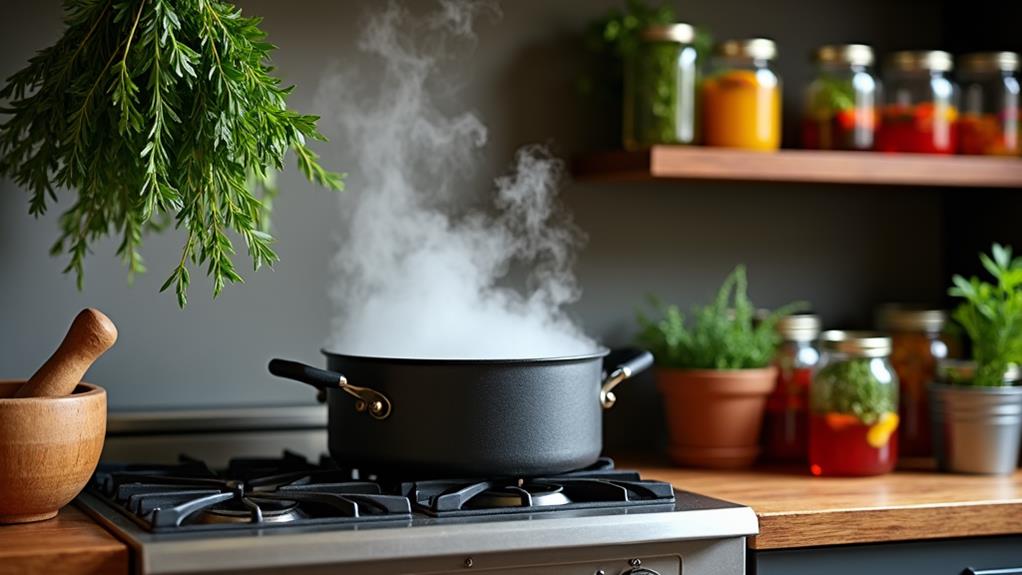
Building on these foundational techniques, let's explore the rich tapestry of traditional and modern infusion methods for herbal sauces.
You'll discover that both time-honored practices and contemporary approaches can elevate your culinary creations.
Traditional methods often rely on heat infusion, where you'll simmer herbs in liquid to extract their flavors. This technique works well for robust herbs like rosemary or thyme.
Simply add your chosen herbs to your sauce base and let them steep over low heat for 15-30 minutes. For a more intense flavor, you can create an herbal sachet using cheesecloth, allowing for easy removal after infusion.
Modern techniques, on the other hand, often employ cold infusion methods. This approach is ideal for delicate herbs like basil or cilantro, preserving their bright flavors and vibrant colors.
To cold infuse, combine your herbs with oil or vinegar in an airtight container and refrigerate for 24-48 hours. Strain the mixture, and you'll have a flavorful infusion ready to enhance your sauces.
Both methods offer unique benefits, so don't hesitate to experiment with different herbs and infusion times to find your perfect flavor profile.
Pairing Herbs and Sauces
Mastering the art of pairing herbs with sauces can transform your culinary creations from ordinary to extraordinary. The key lies in understanding the delicate balance between herb selection and sauce types.
You'll want to consider the flavor profile of your sauce and choose herbs that complement or enhance those tastes. For creamy sauces, try incorporating delicate herbs like chives or tarragon. Tomato-based sauces pair well with robust herbs such as basil or oregano. When working with rich, meaty sauces, consider using earthy herbs like thyme or rosemary.
To elevate your sauce game, keep these innovative pairing ideas in mind:
- Infuse mint into a yogurt-based sauce for a refreshing twist on Greek dishes
- Blend cilantro into a spicy chili sauce for a Mexican-inspired kick
- Steep lavender in a honey-based sauce for a unique dessert topping
- Combine sage with brown butter sauce for a classic Italian pasta enhancement
- Infuse lemongrass into coconut milk-based sauces for Thai-inspired flavors
Herbal Infusions: Beyond Flavor
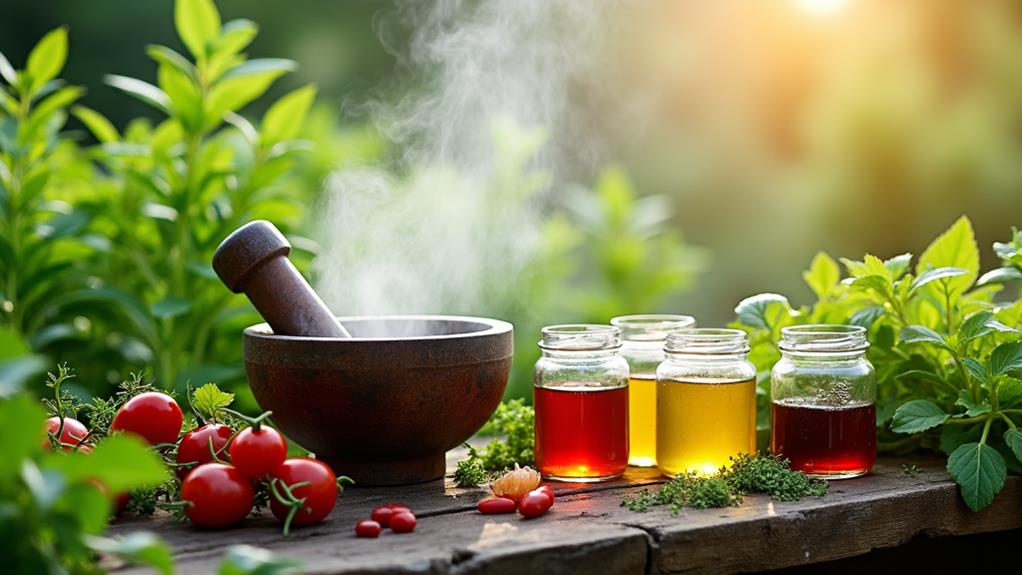
When you infuse herbs into your sauces, you're not just adding flavor; you're creating a multi-layered culinary experience.
The aromatic complexity of herbal infusions can transform a simple sauce into a sensory delight, while simultaneously boosting its nutritional value with beneficial plant compounds.
Moreover, the vibrant colors and unique textures of infused herbs can significantly enhance the visual appeal of your dishes, making them more enticing to diners.
Aromatic Complexity
Herbal infusions bring more than just flavor to sauces; they create an aromatic complexity that elevates the entire dining experience.
When you infuse herbs into your sauces, you're not just adding taste; you're crafting a multidimensional sensory experience. The aromatic notes released by herbs can transform a simple sauce into a captivating journey for the nose and palate.
To harness this aromatic complexity, consider these techniques:
- Steep fresh herbs in hot oil before incorporating into your sauce
- Layer different herbs to create depth and intrigue
- Use dried herbs for concentrated flavors in long-simmered sauces
- Infuse herbs into vinegar or wine bases for added complexity
- Finish sauces with finely chopped fresh herbs for a burst of aroma
Nutritional Value Boost
Beyond their aromatic allure, herbal infusions pack a powerful nutritional punch in sauces. You're not just adding flavor; you're boosting nutrient density and unlocking a treasure trove of health benefits.
These infusions are brimming with antioxidant properties, essential vitamins, and mineral enrichment that can transform your sauces into nutritional powerhouses. By incorporating herbal infusions, you're introducing dietary fiber and harnessing anti-inflammatory effects that support overall well-being.
Imagine your sauce not only tantalizing taste buds but also providing immune support and acting as a digestive aid. You'll be revolutionizing your culinary creations, turning them into functional foods that offer a metabolic boost.
Don't underestimate the impact of these infusions on your sauce's nutritional profile. They're an innovative way to elevate your dishes, offering a concentrated dose of nature's goodness.
As you experiment with different herbs, you'll discover unique combinations that not only enhance flavor but also maximize health benefits. Your sauces will become more than just taste enhancers; they'll be nutritional allies in your quest for healthier, more dynamic cooking.
Visual Appeal Enhancement
Color-infused sauces elevate your dish's visual appeal, transforming it from ordinary to extraordinary. By incorporating herbs into your sauces, you're not just enhancing flavor but also creating a feast for the eyes. The vibrant hues of fresh herbs can dramatically alter the appearance of your sauce, adding depth and intrigue to your culinary creations.
To maximize visual impact, consider these techniques:
- Layer different colored sauces for a striking color contrast
- Sprinkle finely chopped herbs on top for added visual textures
- Use herb-infused oils to create artistic drizzles or swirls
- Incorporate edible flowers for a pop of unexpected color
- Experiment with colorful herb purees as sauce bases
When crafting visually appealing sauces, think beyond traditional green herbs. Red basil, purple sage, and golden oregano can introduce unique color variations.
You'll find that contrasting colors not only make your dish more Instagram-worthy but also stimulate appetite. By playing with visual textures, such as smooth purees alongside coarser herb fragments, you're creating a multi-dimensional sensory experience.
Frequently Asked Questions
Can Herbal Infusions Replace Salt in Low-Sodium Diets?
You can revolutionize your low-sodium diet by embracing herb flavorings as sodium alternatives. They'll elevate your dishes with innovative taste profiles, allowing you to cut back on salt without sacrificing flavor. Experiment with fresh combinations!
How Long Do Homemade Herbal-Infused Oils Last?
Ah, your artisanal oils, destined for eternal glory! Sadly, they're mortal. You'll extend their shelf life by refrigerating and using clean utensils. Store in dark bottles and consume within 1-3 months for peak flavor and safety, you culinary rebel.
Are There Any Herbs to Avoid When Infusing Sauces?
You'll want to avoid overpowering herbs like rosemary or sage in large quantities. They can throw off your sauce's flavor balance. Instead, experiment with milder herbs or adjust herb potency by using less of the stronger ones.
Can Dried Herbs Be Used for Infusions, or Only Fresh Ones?
Did you know dried herbs are 3-4 times more potent than fresh? You can use both for infusions, but adjust quantities. Dried herbs offer concentrated flavor intensity, perfect for innovative sauces. Experiment with ratios to unlock unique taste profiles.
Do Herbal Infusions Affect the Nutritional Value of Sauces?
You'll find that herbal infusions can boost your sauce's nutritional value. They're not just for flavor; they offer herbal benefits and nutrient enhancement. You're elevating your dishes by infusing vitamins, minerals, and antioxidants into your creations.
Final Thoughts
You've now mastered the art of herbal infusions, and you're ready to unleash flavor chaos on unsuspecting diners. As you wield your newfound power, remember: with great herbs comes great responsibility. Don't go overboard, or you'll create culinary monstrosities that'll make Gordon Ramsay weep. Instead, use your skills wisely, balancing flavors like a seasoned maestro. Your sauces will thank you, and your taste buds will rejoice in the aromatic symphony you've orchestrated. Now go forth and infuse with confidence!

